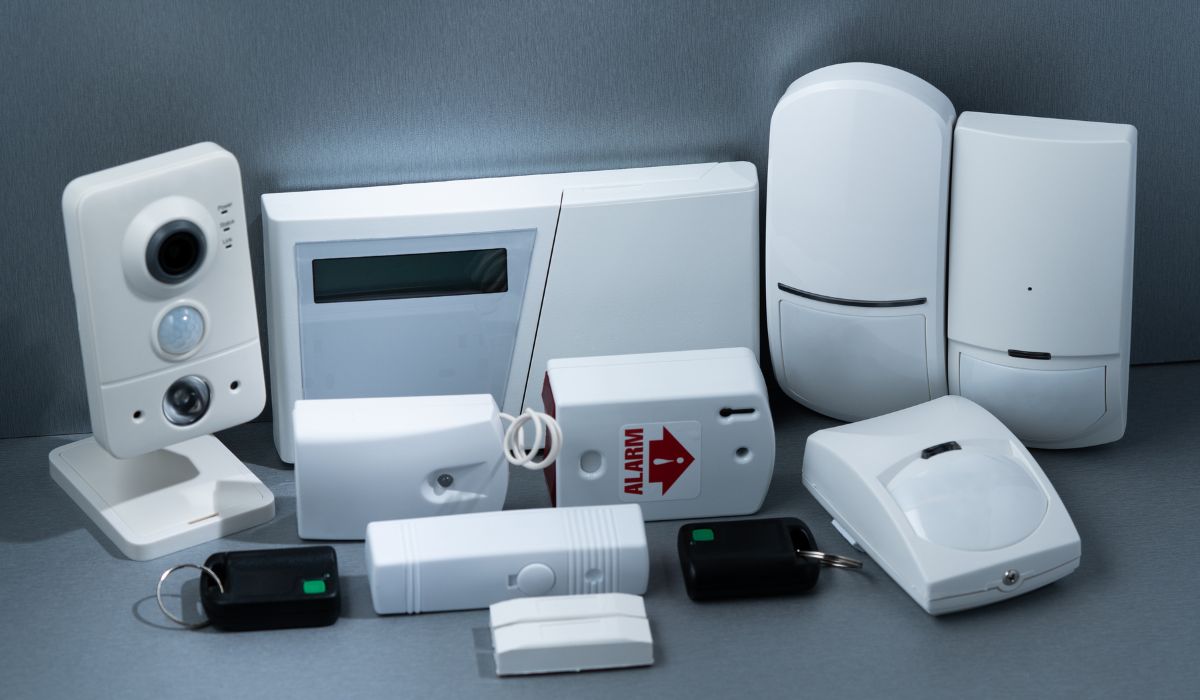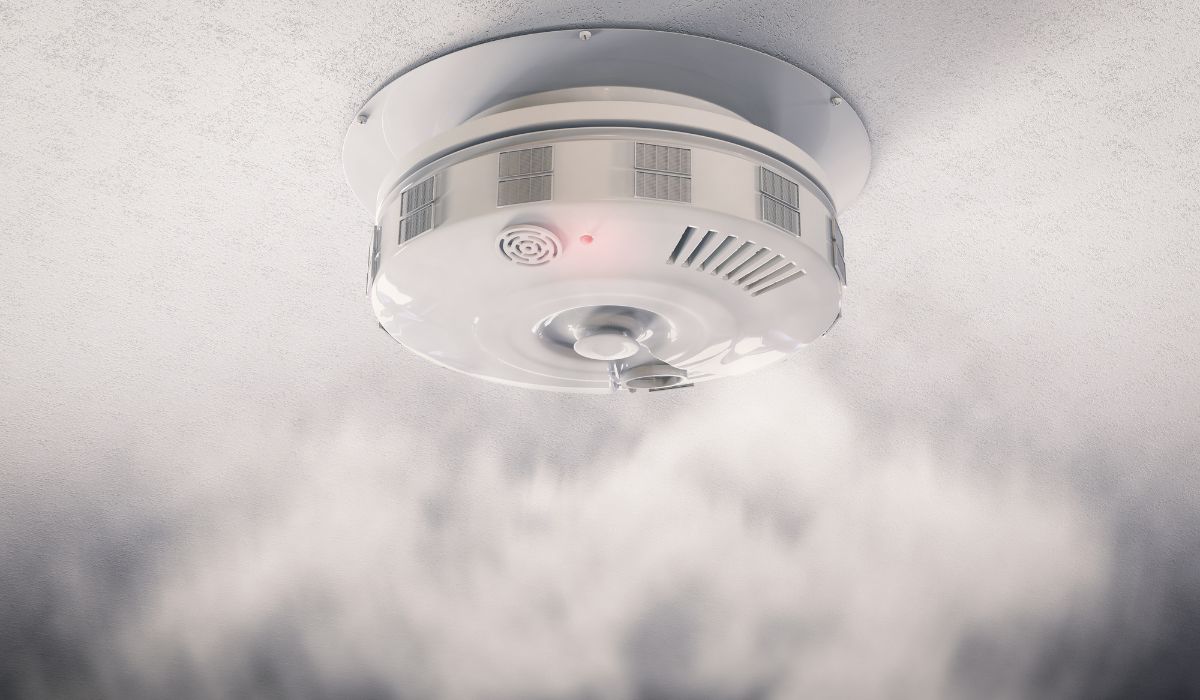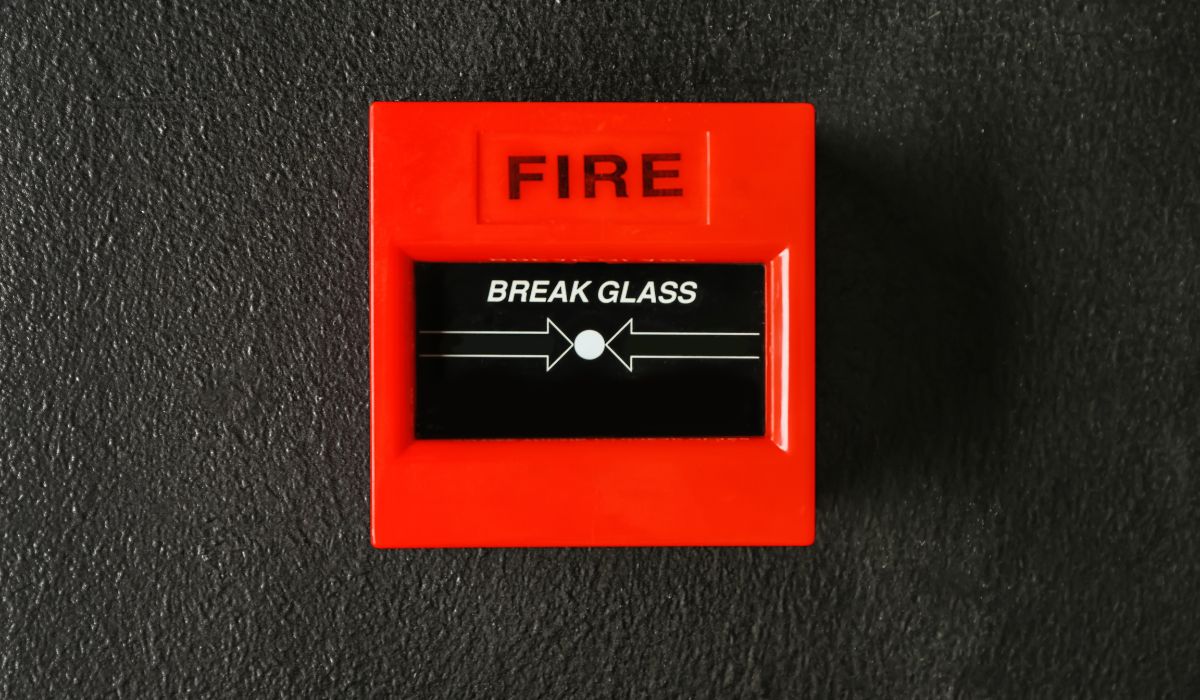Home fire detection systems are crucial components of any household’s safety infrastructure. They serve as the first line of defense against the devastating consequences of fire outbreaks. Whether it’s a traditional smoke detector or a cutting-edge smart system, these devices play a vital role in protecting lives and property.
Home Fire Detection Systems are vital for safety, offering an early warning for fire incidents, thus, minimizing damage and potential injuries.
Comprehensive guides provide direction on choosing the right system according to home configuration, installing it properly for maximum effectiveness, and understanding how to maintain and check regularly to ensure functionality.
It also entails factors to consider for satisfactory performance such as noise levels, alerts for battery replacement, and smart features like remote monitoring. Satisfaction complements safety when a detection system works impeccably, providing peace of mind to homeowners.
Types of Home Fire Detection Systems

There are several types of home fire detection systems available, including ionization smoke detectors, photoelectric smoke detectors, heat detectors, and combination detectors. Each type has its own set of advantages and is suited to different environments and fire risks.
There are several types of home fire detection systems available, each offering different features and benefits. Here are the main types:
Ionization Smoke Detectors:
These detectors use a small amount of radioactive material to ionize air molecules. When smoke enters the chamber, it disrupts the ionization process, triggering the alarm. Ionization detectors are generally more responsive to fast-flaming fires.
Photoelectric Smoke Detectors:
Photoelectric detectors use a light source and a light sensor to detect smoke particles. When smoke enters the chamber, it scatters the light, causing it to hit the sensor and trigger the alarm. Photoelectric detectors are typically more responsive to slow-smoldering fires.
Dual-Sensor Smoke Detectors:
These detectors combine both ionization and photoelectric technologies to provide more comprehensive fire detection. They are designed to quickly respond to a wide range of fire types.
Heat Detectors:
Heat detectors are activated when they sense a rapid increase in temperature, indicating the presence of a fire. They are often used in areas where smoke detectors may not be suitable, such as kitchens or garages, where smoke from cooking or vehicle exhaust could cause false alarms.
Carbon Monoxide Detectors:
Carbon monoxide detectors are designed to detect elevated levels of carbon monoxide gas in the air, which can be produced by malfunctioning appliances or heating systems. They sound an alarm when carbon monoxide levels exceed a certain threshold.
Combination Detectors:
Some detectors combine smoke and carbon monoxide detection capabilities into a single device, providing comprehensive protection against both fire and carbon monoxide poisoning.
Smart Detectors:
Smart fire detection systems are connected to the internet and can send alerts to smartphones or other devices when smoke, heat, or carbon monoxide is detected. They may also offer additional features such as remote monitoring, self-testing, and integration with home automation systems.
Wireless Detectors:
Wireless fire detection systems use radio frequency communication to connect detectors throughout the home without the need for wiring. This makes installation easier and allows for greater flexibility in placement.
Hardwired Detectors:
Hardwired fire detection systems are connected directly to the home’s electrical wiring and may include battery backup for continued operation during power outages. They are often interconnected so that when one detector is triggered, all detectors in the home sound their alarms.
Monitored Systems:
Some fire detection systems are connected to monitoring services that receive alerts when a detector is triggered. These services can then notify emergency responders if necessary, providing an added layer of protection.
When choosing a home fire detection system, it’s important to consider factors such as the size and layout of your home, the types of fires you want to detect, and any specific features or capabilities you may need.
How Do Home Fire Detection Systems Work?

Home fire detection systems operate on various principles, including smoke detection, heat detection, and sometimes both. Smoke detectors utilize optical sensors to detect the presence of smoke particles, while heat detectors monitor temperature changes. When triggered, these systems emit alarms to notify occupants of potential fire hazards.
Home fire detection systems work by monitoring for signs of fire or smoke and then alerting occupants to the potential danger. Here’s a basic overview of how they work:
Smoke Detection:
The most common type of home fire detection system uses smoke detectors. Smoke detectors contain sensors that can detect the presence of smoke particles in the air. When smoke particles enter the detector, they disrupt an electrical current or beam of light, triggering the alarm.
Heat Detection:
Some fire detection systems use heat detectors instead of or in addition to smoke detectors. These detectors are activated when they sense a rapid increase in temperature, indicating the presence of a fire.
Carbon Monoxide Detection:
Many modern home fire detection systems also include carbon monoxide detectors. Carbon monoxide is a colorless, odorless gas produced by incomplete combustion of fuels. Carbon monoxide detectors use sensors to detect elevated levels of carbon monoxide in the air and sound an alarm to warn occupants.
Alarms and Alerts:
When a smoke, heat, or carbon monoxide detector is triggered, it activates an alarm to alert occupants of the potential danger. This alarm may be a loud sound, flashing lights, or a combination of both. Some systems also include features such as voice alerts or notifications sent to smartphones.
Power Source:
Home fire detection systems are typically powered by electricity from the home’s wiring, batteries, or a combination of both. Battery-powered detectors provide protection even during power outages.
Interconnection:
In many cases, multiple detectors within a home are interconnected so that when one detector is triggered, all the detectors sound their alarms. This ensures that occupants throughout the home are alerted to the danger, even if the fire is in a remote location.
Monitoring Services:
Some home fire detection systems are connected to monitoring services that receive alerts when a detector is triggered. These services can then notify emergency responders if necessary, providing an added layer of protection.
Overall, home fire detection systems are designed to quickly detect the presence of fire, smoke, or carbon monoxide and alert occupants so they can evacuate safely and emergency responders can be summoned if needed.
Factors to Consider When Choosing a Home Fire Detection System

Selecting the right home fire detection system requires careful consideration of factors such as the size and layout of the property, the presence of potential fire hazards, budget constraints, and personal preferences. It’s essential to choose a system that offers reliable performance and meets the specific needs of the household.
Choosing the right home fire detection system is crucial for ensuring the safety of your household. Here are some factors to consider when making your decision:
Type of Home Fire Detection System Technology:
Determine whether you need smoke detectors, heat detectors, carbon monoxide detectors, or a combination of these. Consider the types of fires common in your area and the specific hazards in your home.
Sensor Sensitivity Home Fire Detection System:
Look for detectors with adjustable sensitivity levels or dual-sensor technology that can detect both fast-flaming and slow-smoldering fires.
Power Source Home Fire Detection System:
Decide between hardwired detectors, which are connected to your home’s electrical system, or battery-operated detectors, which provide flexibility in placement and continue to function during power outages. Some systems offer a combination of both for added reliability.
Ease of Installation:
Evaluate the installation process for the detectors. Wireless systems are typically easier to install since they don’t require running wires through walls or ceilings. Some systems may also offer DIY installation options.
Maintenance Requirements:
Check the maintenance needs of the detectors, such as regular testing and battery replacement. Look for features like self-testing and low-battery alerts to ensure that the system remains operational at all times.
Smart Features:
Consider smart fire detection systems that offer additional features like remote monitoring, smartphone alerts, integration with home automation systems, and voice control. These features provide added convenience and peace of mind.
Certifications and Standards:
Ensure that the detectors meet industry standards and certifications for safety and reliability, such as UL (Underwriters Laboratories) certification or compliance with local building codes.
Warranty and Support:
Look for detectors that come with a warranty and reliable customer support services. This can provide assurance and assistance in case of any issues or malfunctions with the system.
By considering these factors and conducting thorough research, you can choose a home fire detection system that meets your specific needs and provides optimal protection for your household.
Installation and Maintenance of Home Fire Detection Systems
Proper installation and regular maintenance are crucial for ensuring the effectiveness of home fire detection systems. Installation should be carried out according to manufacturer guidelines or by a qualified professional. Routine maintenance tasks include testing the system regularly, replacing batteries as needed, and keeping the detectors clean and free of obstructions.
Installing and maintaining a home fire detection system is essential for ensuring its effectiveness in protecting your household. Here are guidelines for both installation and maintenance:
Installation of Home Fire Detection Systems
Placement:
Install smoke detectors on every level of your home, including the basement and near sleeping areas. Place detectors on the ceiling or high on the wall, as smoke rises. Follow manufacturer recommendations for placement distance from corners and walls.
Interconnection:
If using interconnected detectors, follow manufacturer instructions to wire them together so that when one detector detects smoke, all alarms sound simultaneously.
Power Source:
If installing hardwired detectors, ensure they are connected to your home’s electrical system by a qualified electrician. For battery-operated detectors, install fresh batteries according to manufacturer recommendations.
Testing:
After installation, test each detector to ensure it’s functioning correctly. Most detectors have a test button that you can press to initiate a test alarm.
Documentation:
Keep a record of the installation date, location of detectors, and any maintenance performed. This documentation can be helpful for future reference.
Maintenance of Home Fire Detection Systems
Regular Testing:
Test each detector monthly to ensure they are operational. Follow the manufacturer’s instructions for testing procedures.
Battery Replacement:
If your detectors are battery-operated, replace the batteries at least once a year or according to manufacturer recommendations. Some detectors have low-battery alerts to remind you when replacement is necessary.
Cleaning:
Keep detectors clean from dust and debris, as these can interfere with their operation. Use a vacuum cleaner or a soft brush to gently clean the exterior of the detectors.
Avoid Tampering:
Avoid painting or covering detectors, as this can interfere with their ability to detect smoke or heat. Also, do not remove batteries or disconnect power sources unless performing maintenance tasks.
Check Interconnection:
If your detectors are interconnected, periodically check the interconnection to ensure all detectors are communicating properly. Test the system by activating one detector and verifying that all alarms sound.
Replace Outdated Detectors:
Replace detectors according to manufacturer recommendations or every 10 years, as sensors may degrade over time and become less reliable.
Professional Inspection:
Consider hiring a professional inspector to conduct a thorough inspection of your fire detection system annually or as recommended by local regulations.
Update as Needed:
Stay informed about advancements in fire detection technology and consider updating your system if newer, more advanced options become available.
By following these guidelines for installation and maintenance, you can ensure that your home fire detection system remains in optimal condition and provides reliable protection for your household.
Benefits of Home Fire Detection Systems
Home fire detection systems offer numerous benefits, including early detection of fires, which can save lives and property. Additionally, they provide peace of mind to homeowners, knowing that they have taken proactive steps to protect their loved ones and belongings from the devastation of fire.
Home fire detection systems offer several benefits that are crucial for protecting your household and property. Here are some of the key benefits:
Early Detection:
Fire detection systems can quickly detect the presence of smoke, heat, or carbon monoxide, providing early warning to occupants. Early detection gives individuals more time to evacuate safely and reduces the risk of injury or fatalities.
Life Safety:
The primary benefit of fire detection systems is saving lives. By alerting occupants to the presence of a fire or other hazards, these systems give people the opportunity to escape before the situation becomes life-threatening.
Property Protection:
In addition to saving lives, fire detection systems help protect property by alerting occupants and emergency responders to the presence of a fire early on. This can help minimize damage to the home and its contents.
Peace of Mind:
Knowing that your home is equipped with a reliable fire detection system can provide peace of mind for you and your family. It allows you to feel confident that you’ll be alerted to potential dangers, even when you’re asleep or away from home.
Compliance with Regulations:
Many jurisdictions require homes to have fire detection systems installed to meet building codes and regulations. Installing a fire detection system ensures compliance with these requirements and may also reduce insurance premiums.
Quick Emergency Response:
Fire detection systems that are connected to monitoring services can automatically alert emergency responders when a fire or other emergency is detected. This can lead to a faster response time and potentially save more lives.
Detection of Multiple Hazards:
Some fire detection systems are equipped to detect not only smoke and fire but also carbon monoxide and other hazards. This comprehensive protection ensures that occupants are alerted to a wide range of potential dangers.
Integration with Smart Home Systems:
Modern fire detection systems often integrate with smart home technology, allowing for remote monitoring, smartphone alerts, and integration with other smart devices. This provides added convenience and control for homeowners.
Interconnection for Whole-House Protection:
Interconnected fire detection systems ensure that when one detector is triggered, all detectors in the home sound their alarms. This provides comprehensive protection throughout the house, even in areas where the fire may not be immediately visible.
Reduced Losses:
By alerting occupants and emergency responders to fires early on, fire detection systems can help minimize property damage and financial losses associated with fire-related incidents.
Overall, home fire detection systems offer invaluable protection for occupants and property, providing early warning of potential dangers and facilitating a swift and effective response in the event of a fire or other emergency.
Frequently Asked Questions (FAQs) About Home Fire Detection Systems
How often should home fire detection systems be tested?
Home fire detection systems should be tested at least once a month to ensure proper functioning. Additionally, it’s recommended to conduct a full system test annually, including testing all detectors and alarm units.
Are home fire detection systems reliable?
Yes, when properly installed and maintained, home fire detection systems are highly reliable in detecting and alerting occupants to the presence of a fire. However, it’s essential to follow manufacturer guidelines for installation, testing, and maintenance to ensure optimal performance.
Can home fire detection systems detect all types of fires?
While home fire detection systems are effective in detecting many types of fires, including those caused by smoldering materials and flaming fires, they may not detect certain types of fires, such as those fueled by flammable liquids or gases, as quickly. It’s essential to choose a system that offers comprehensive coverage based on the specific fire risks in your home.
Do home fire detection systems require professional installation?
While some home fire detection systems can be installed by homeowners, it’s generally recommended to have them installed by a qualified professional. Professional installation ensures that the system is properly configured and placed for optimal performance and compliance with building codes.
What should I do if my home fire detection system goes off accidentally?
If your home fire detection system goes off accidentally, first check for signs of fire or smoke. If there are none, silence the alarm and investigate the cause, such as dust or cooking smoke triggering the detector. If you’re unable to determine the cause or if the alarm continues to sound, contact emergency services for assistance.
Are there any additional features I should consider in a home fire detection system?
In addition to basic smoke and heat detection capabilities, some home fire detection systems offer advanced features such as carbon monoxide detection, wireless connectivity for remote monitoring, and integration with smart home automation systems. Consider your specific needs and preferences when choosing additional features for your home fire detection system.
In conclusion, home fire detection systems are indispensable components of any household’s safety infrastructure. With their ability to detect fire hazards early on, these systems provide invaluable protection against the devastating consequences of fires. Whether it’s a traditional smoke detector or a state-of-the-art smart system, investing in a reliable home fire detection system is essential for safeguarding lives and property.
By understanding how these systems work, and considering factors such as type, installation, and maintenance, homeowners can make informed decisions when choosing the right system for their needs. Moreover, adherence to regulations and standards ensures that the selected system meets specific safety requirements.

I’m Abdus Sobur, a highly skilled and professional Fire Safety Officer with a passion for safeguarding lives and property. Over the course of my career, I’ve conducted numerous successful fire safety audits, earning a reputation for excellence in ensuring public safety.
In addition to my role as a Fire Safety Officer, I’m also dedicated to raising awareness about the importance of fire safety. Through my blog, I share insights into the functions of different fire safety equipment, aiming to empower individuals with the knowledge they need to protect themselves and their communities.
I’m driven by a deep commitment to promoting fire safety awareness and preventing fire-related incidents.

